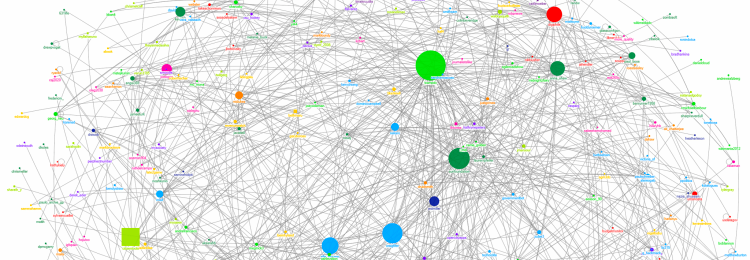


Slime Mold Exemplifies How Social Networks Exhibit a Collective Intelligence Not Available to Each Individual Member
Social networks exhibit a collective intelligence not available to each individual member. –Dr. Nicholas...
The Laughter Epidemic: An Example of How Much We’re Connected and Affected by Others’ Emotions
Tanzania 1962: In a girls’ boarding school in Africa, three students suddenly started laughing uncontrollably. Six weeks later, more than half the school had been infected. The school was closed and people were sent back to their towns and villages. Ten days later, another curious thing happened: the laughter broke out again in a village over 55 miles away, where some of the students lived. 100s more were affected. Other outbreaks started over a wide area, until the epidemic peated out over six months. By then, over 1,000 people had been affected, though they all fully recovered. So why did it happen? Some villagers thought it was caused by radiation poisoning, and doctors were called in to investigate. Their findings: mass psychogenic illness. Emotions of all kinds can spread quickly. How you feel depends on how others feel. In fact, even a friends’ friends’ friend can affect you. We’re biologically hardwired to mimic people around us. By copying others’ outward behavior, we also adopt their inner emotions: your friend feels happy. She smiles. So you smile, and you feel happier. Positive emotions like this can fuel an emotional stampede, which can often last longer than a stampede of negative emotions. –Excerpt from the above video, “Laughter Epidemic.” Image: "The three gigglers" by Alan...
What Is Social Contagion? How the Spread of Obesity Is an Example of Social Contagion
Social contagion is the spread of thoughts, emotions, and behaviors from person to person and among larger groups as affected by shared information and mimicry. Paul M. Kirsch, “The Influence of Social Contagion and Technology on Epidemic Non-Suicidal Self-Injury,” 2012. The Spread of Obesity: An Example of Social Contagion Social contagion actually may account for as much, or perhaps, even more of a person’s risk of obesity than genetic and other factors that have been previously studied. Academic research shows that, at least in the American population, and maybe in the international population as well, that we are all connected to one another by six degrees of separation. Your friends’ friends’ friends’ friends’ friends’ friend, for example, is going to include just about everybody in the population. And what we find, remarkably in the study, is that although the average degree of separation between individuals is six, here your influence extends up to three degrees of separation. And so, halfway, pretty much half the distance into the social network, your health behavior is having an impact on other people. –Dr. James Fowler in “Obesity and Social Networks – CBS.” Mindless Eating – Explaining Obesity in Terms of Social Contagion Image: "TransparencyCamp 2012 - #tcamp12 social network graph [1/2]"...
